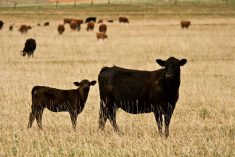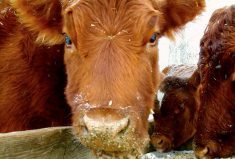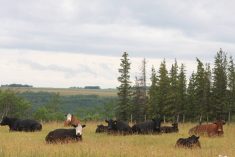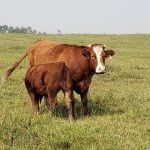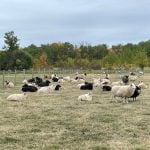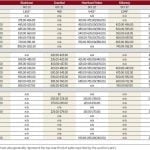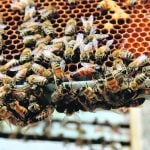Western Canadian yearling prices were relatively unchanged from week-ago levels; however, feeder cattle fit for grass and calves dropped $4 to as much as $10 from seven days earlier. Rising feed grain costs appear to be affecting lighter weight categories more than the yearling market. Feedlots will be struggling with negative margins through the summer months, which will result in lower prices for yearlings in August and September.
At the auction ring, the buying crowd was rather small, with most feedlots sitting on their hands. Buyers held scale-down orders and were surprised how soft the market became late in the week. Eastern Canadian demand was subdued; therefore, all Prairie markets were dependent on buying interest from Alberta. Sharp discounts were noted on fleshier and smaller-frame cattle. Adverse weather once again plagued most of Western Canada. Feedlot operators are waiting until pen conditions improve before increasing ownership.
Read Also

U.S. grains: Soy futures set 15-month high after China agrees to purchases
U.S. soybean futures reached a 15-month high on Thursday after President Donald Trump’s administration said top-importer China agreed to buy tens of millions of tons of American crops in the next few years as part of a trade truce.
In central Saskatchewan, medium- to heavier-flesh mixed Simmental-blended medium-frame steers averaging around 940 lbs. were quoted at $155. In west-central Manitoba, fleshier mixed red Angus and tan steers averaging just under 850 lbs. sold for $165 while similar-quality heifers were $152-$155.
The U.S. Department of Agriculture is forecasting a year-over-year 800 million-lb. increase in second-quarter beef production, setting a negative tone for live cattle futures. More supplies equals lower price, and calves are bearing the full brunt of this burdensome fundamental structure. In east-central Saskatchewan, Angus-based steers weighing just under 550 lbs. sold for $195, while central Alberta markets held a small premium; a small group of mixed steers weighing 550 lbs. fetched $209.
The feedlot sector has some difficult times ahead; don’t expect price action similar to last year during the spring period.
— Jerry Klassen manages the Canadian office of Swiss-based grain trader GAP SA Grains and Produits Ltd. and is president and founder of Resilient Capital, specializing in proprietary commodity futures trading and market analysis. Jerry consults with feedlots on risk management and writes a weekly cattle market commentary. He can be reached at 204-504-8339.






